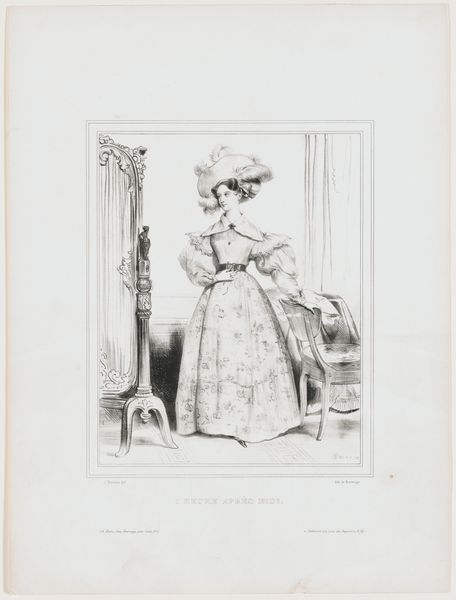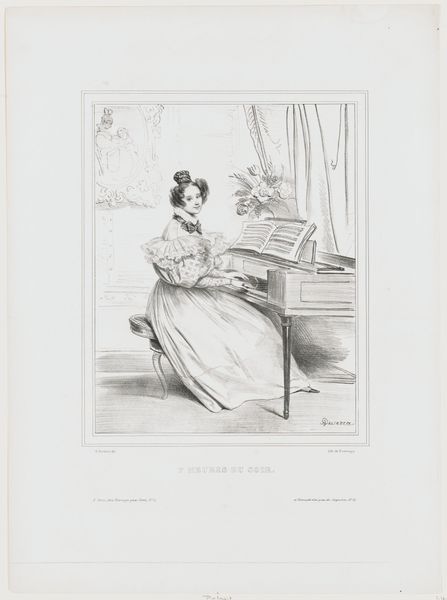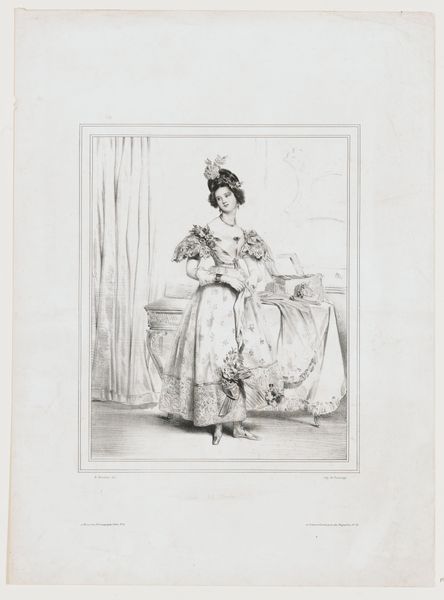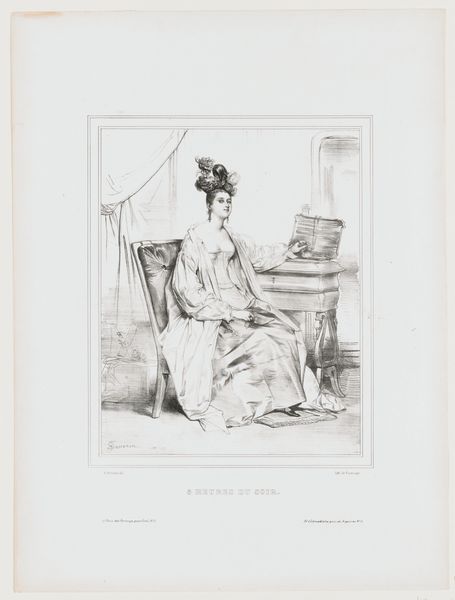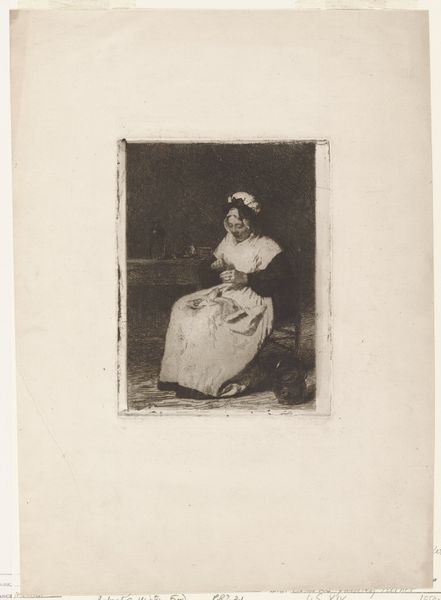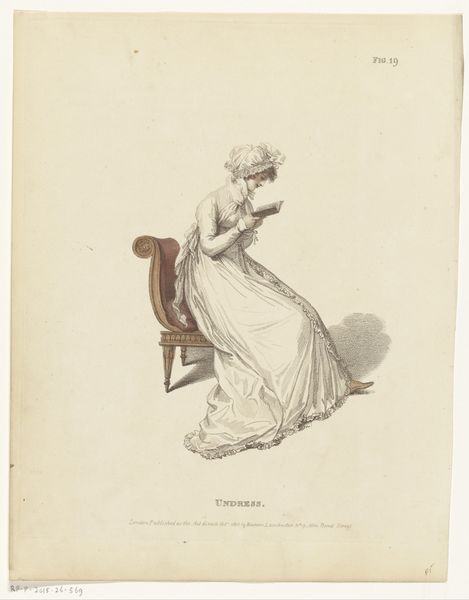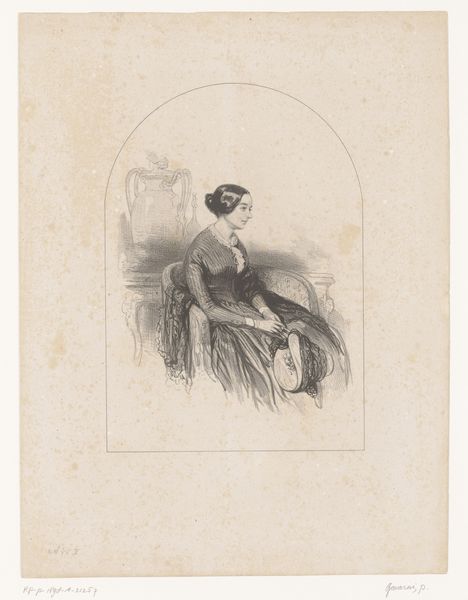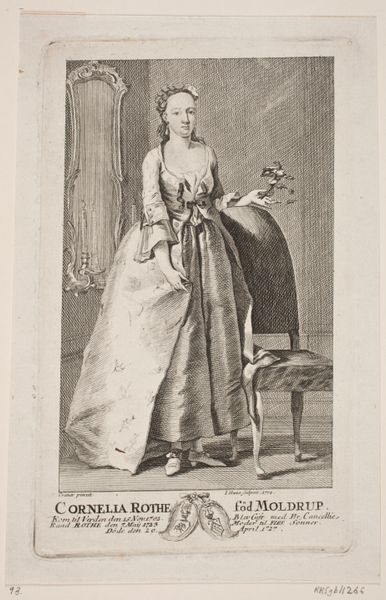
Double-sided Portrait of Mademoiselle Eva Gonzalès 1884
0:00
0:00
print, etching
#
portrait
# print
#
impressionism
#
etching
#
genre-painting
#
academic-art
Dimensions: 5 1/2 x 3 3/4 in. (13.97 x 9.53 cm) (image)6 1/4 x 4 3/4 in. (15.88 x 12.07 cm) (plate)8 7/8 x 6 3/16 in. (22.54 x 15.72 cm) (sheet)
Copyright: Public Domain
Editor: This is Henri-Charles Guérard's "Double-sided Portrait of Mademoiselle Eva Gonzalès" from 1884, an etching. It seems meta somehow, portraying a woman painting in her studio. What are your thoughts on this piece? Curator: The magic here, to me, lies in unraveling the social and material conditions of its creation. An etching in 1884 isn't just a pretty picture. It represents a specific kind of labor, both Guérard’s and Gonzalès’. Think about the availability of materials – the paper, the etching tools, the acid. And consider who had access to those means of artistic production. Editor: So it's not just about the aesthetic representation of a female artist, but the material circumstances that enabled the artwork's production? Curator: Precisely. It prompts us to consider the economics of artmaking in 19th-century France. Who commissioned the piece, who was the audience for such a print, and what did it signify to circulate an image of a woman engaged in artistic labor? Was it valorizing or exploiting her work, and the notion of women working at the time? Editor: That’s interesting. I hadn’t considered it from the angle of labor and accessibility. It really complicates my initial reading. Curator: Right, and looking at the composition reinforces these questions. Is her workspace comfortable? Productive? Consider also how printmaking allowed for a democratization of images compared to painting, enabling broader circulation and potentially affecting the artist's economic reality. Editor: That gives me a new perspective, focusing less on individual genius and more on how the art object reflects broader economic and social realities. Thanks! Curator: My pleasure! It is so interesting to dig beneath the surface and consider who had a hand in what, literally and figuratively.
Comments
minneapolisinstituteofart almost 2 years ago
⋮
Henri-Charles Guérard played a significant role in the struggle to liberate original printmaking in the last twenty years of the nineteenth century. He began his career as a painter, but was soon drawn to intaglio. He was a talented etcher and supported himself through his activities as an illustrator and reproductive printmaker. Critics said little about his original work until his first solo exhibition at the Galeries Bernheim-Jeune in 1887 when the extent of his ability was displayed. Guérard was well known in print circles and was the only artist Edouard Manet trusted to print his plates. Guérard was a good friend of Manet’s and married his only student, Eva Gonzalès, in 1879. The proposed print is Guérard’s interpretation of Manet’s famous portrait of Gonzalès.
Join the conversation
Join millions of artists and users on Artera today and experience the ultimate creative platform.
